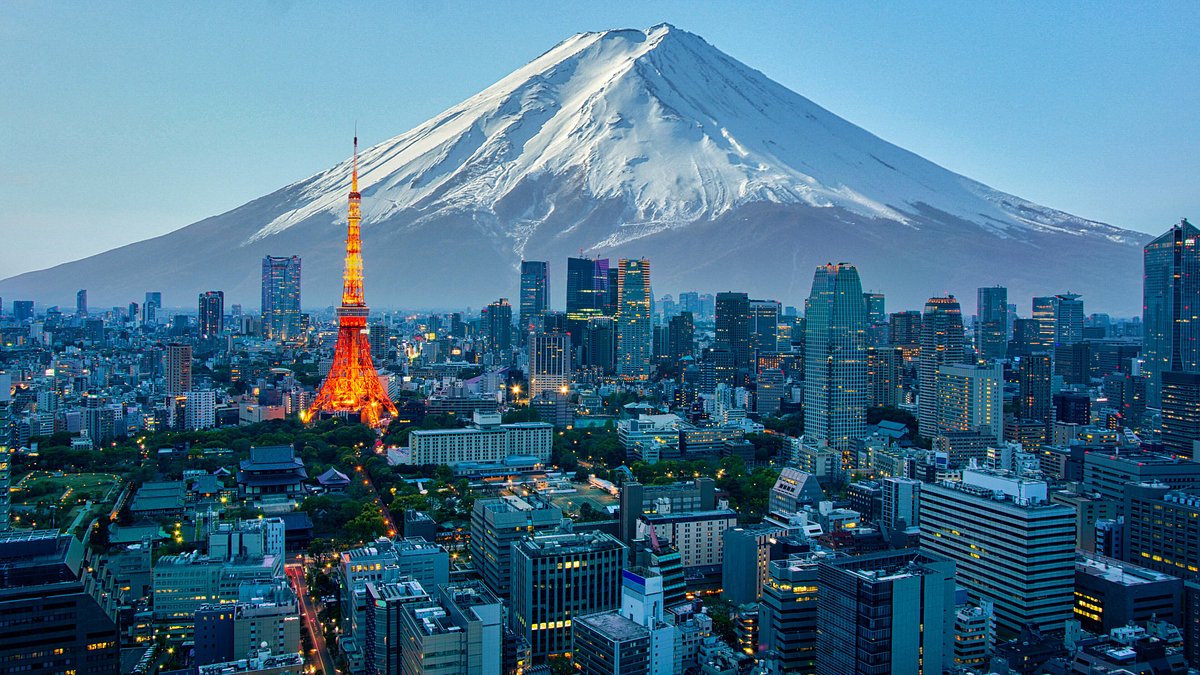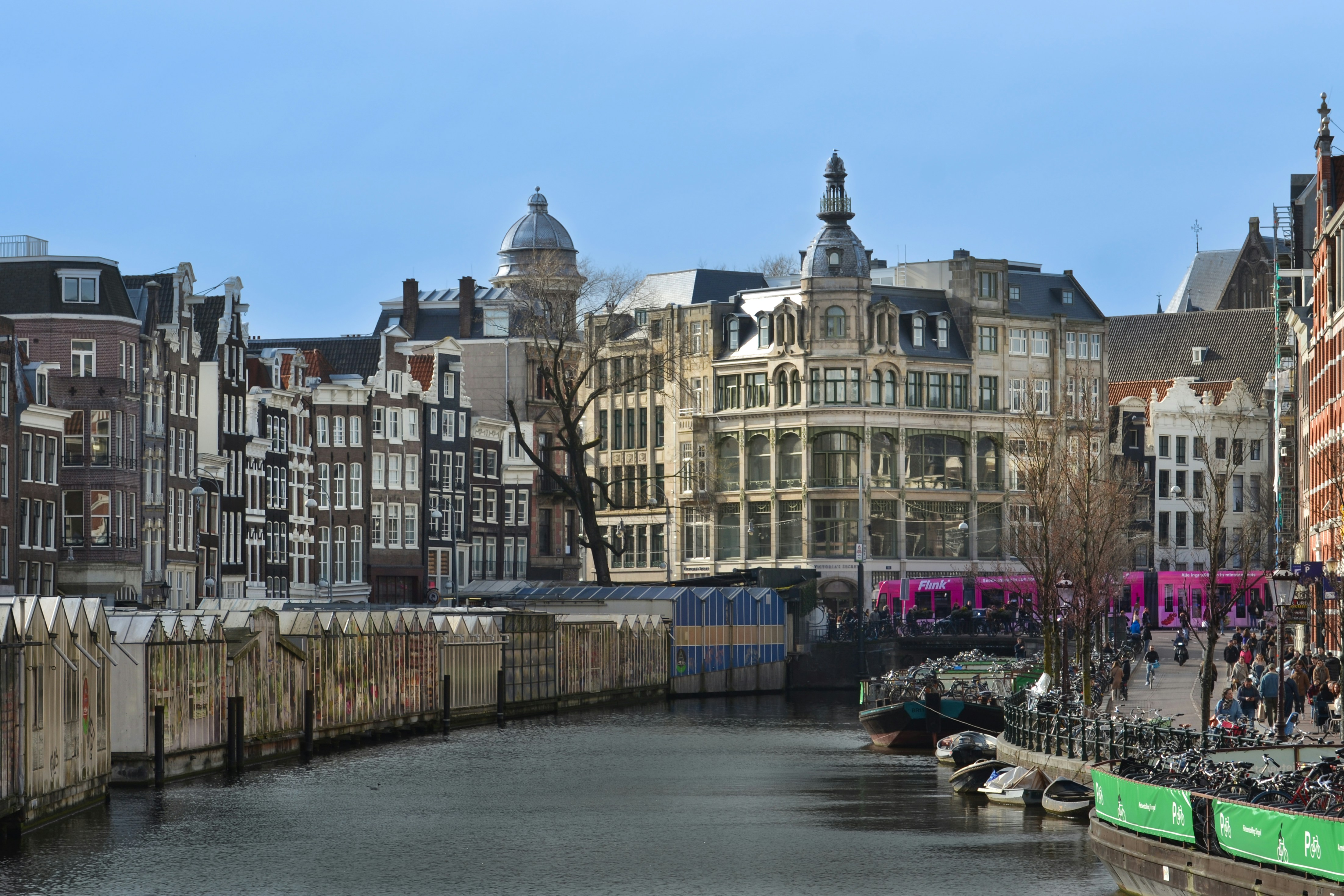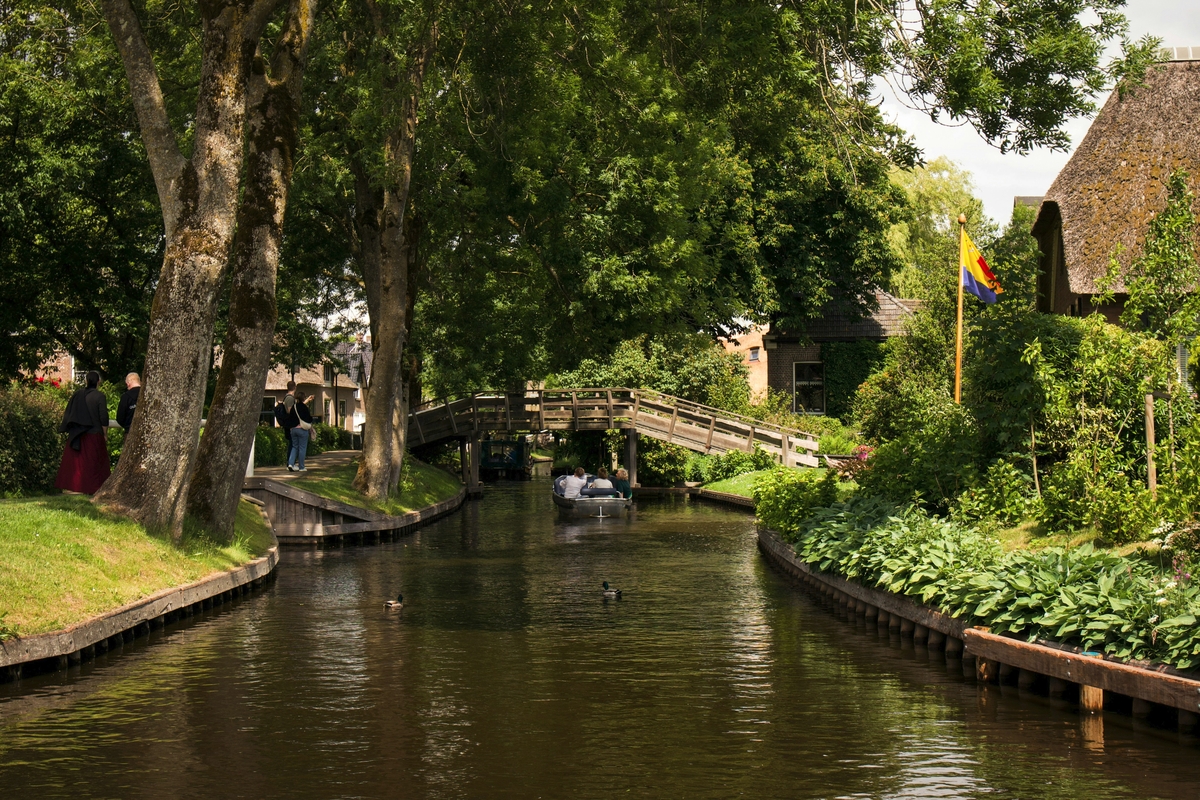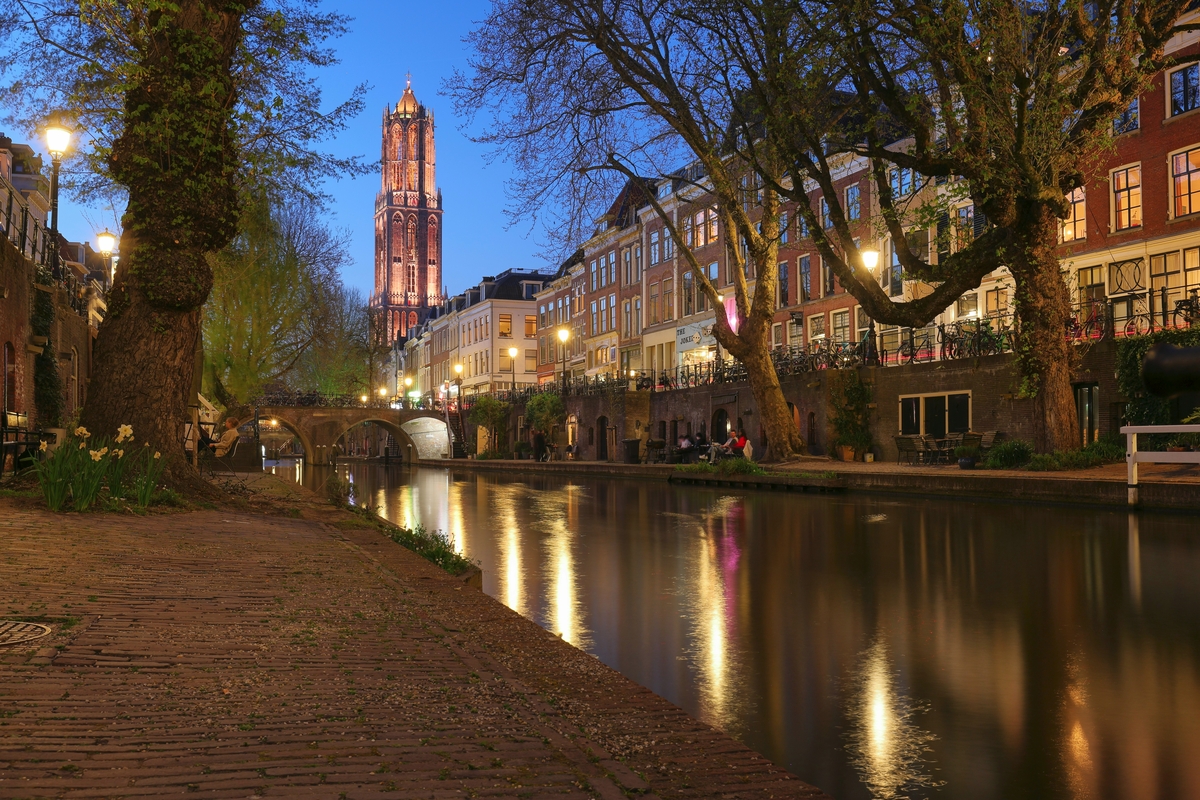Top 5 Places to Visit in the Netherlands | Ultimate Travel Guide
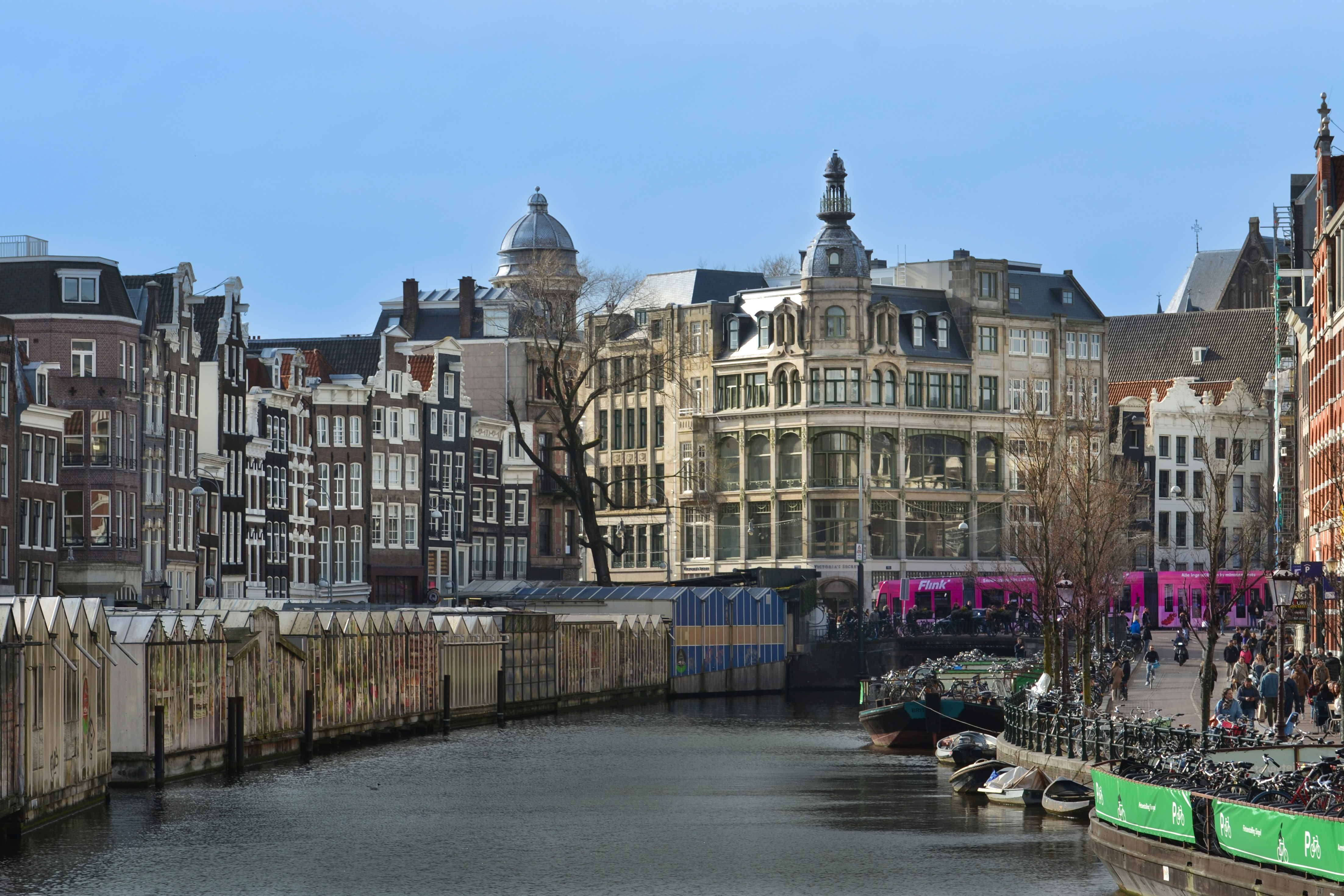
Discover the Charm of the Netherlands
The Netherlands, often referred to as Holland, is a captivating European destination that offers an incredible blend of rich history, stunning natural beauty, and vibrant modern culture. From the iconic canals of Amsterdam to the breathtaking tulip fields, this small country packs a powerful punch when it comes to unforgettable travel experiences.
In this comprehensive guide, we'll explore the top 5 must-visit destinations in the Netherlands, providing you with insider tips, must-see attractions, and practical advice to help you plan the perfect Dutch adventure. Whether you're a first-time visitor or a seasoned traveler returning to explore more of this beautiful country, our guide will help you discover the very best that the Netherlands has to offer.
Why Visit the Netherlands?
The Netherlands is renowned for its flat landscape dotted with windmills, cycling routes, tulip fields, and charming cities with intricate canal systems. It's a country that effortlessly combines historical significance with modern innovation, making it a fascinating destination for all types of travelers.
1. Amsterdam: The Venice of the North
Amsterdam, the capital city of the Netherlands, is undoubtedly one of Europe's most captivating destinations. Known for its elaborate canal system, narrow houses with gabled facades, and rich artistic heritage, Amsterdam offers an unforgettable urban experience that seamlessly blends history with contemporary culture.
Must-See Attractions in Amsterdam
The Canal Ring (Grachtengordel)
Amsterdam's iconic canal ring is a UNESCO World Heritage site and the city's most recognizable feature. The concentric canals, built during the Dutch Golden Age in the 17th century, are lined with elegant merchant houses, charming bridges, and bustling waterfront cafes. A canal cruise is an absolute must-do activity, offering a unique perspective of the city's architecture and daily life.
Rijksmuseum
The Rijksmuseum is the Netherlands' national museum dedicated to arts and history. Housing an extensive collection that includes masterpieces by Rembrandt, Vermeer, and other Dutch masters, this magnificent building is a cultural treasure trove. Don't miss Rembrandt's "The Night Watch," which takes pride of place in the Gallery of Honour.
Anne Frank House
A visit to the Anne Frank House provides a poignant and powerful experience. This is the actual building where Anne Frank and her family hid from Nazi persecution during World War II, and where she wrote her famous diary. The museum offers a deeply moving insight into this dark period of history and serves as a reminder of the importance of tolerance and human rights.
Van Gogh Museum
Dedicated to the works of Vincent van Gogh and his contemporaries, this museum houses the largest collection of Van Gogh's paintings and drawings in the world. The exhibits are arranged chronologically, allowing visitors to follow the artist's development and see how his style evolved throughout his career.
Amsterdam Travel Tips
- Consider purchasing an I amsterdam City Card for free entry to museums and public transport
- Rent a bicycle to experience the city like a local - Amsterdam is one of the world's most bike-friendly cities
- Book museum tickets online in advance to avoid long queues, especially during peak season
- Explore the Jordaan neighborhood for charming streets, art galleries, and cozy cafes
- Visit the Albert Cuyp Market for a taste of local life and delicious street food
Best Time to Visit Amsterdam
Spring (April-May) offers mild weather and beautiful blooms, while summer (June-August) brings warm temperatures and numerous festivals. For fewer crowds, consider visiting in the shoulder seasons of September-October or March-April.
2. Keukenhof: The Garden of Europe
Located in Lisse, just southwest of Amsterdam, Keukenhof is the world's largest flower garden and a breathtaking spectacle that attracts visitors from around the globe. Often called the "Garden of Europe," Keukenhof showcases the Netherlands' world-famous tulips and other spring bulbs in a stunning 79-acre park that only opens for a limited time each year.
Exploring Keukenhof Gardens
The Flower Displays
Keukenhof features approximately 7 million flower bulbs planted annually, creating an explosion of color that must be seen to be believed. The gardens are meticulously designed with themed areas, including English landscape gardens, Japanese country gardens, and historical gardens. Each year has a specific theme that influences the designs and special exhibitions throughout the park.
Pavilions and Exhibitions
Keukenhof features several indoor pavilions that host changing flower shows and exhibitions. The Oranje Nassau Pavilion showcases orchids and anthuriums, while the Willem-Alexander Pavilion features tulips, hyacinths, and other spring flowers. The Beatrix Pavilion is dedicated to orchids and phalaenopsis, creating a tropical oasis within the park.
Windmill and Boat Tour
A historic windmill located within Keukenhof offers panoramic views of the surrounding flower fields. From here, you can take a whisper boat tour through the adjacent bulb fields, providing a unique perspective of the colorful stripes of tulips, hyacinths, and daffodils that stretch as far as the eye can see.
Beyond Keukenhof: Exploring the Flower Region
While Keukenhof is the main attraction, the surrounding Bollenstreek (Bulb Region) offers additional opportunities to experience the Dutch flower culture. Consider renting a bicycle to explore the flower routes that wind through the colorful fields, or visit one of the local flower farms to learn more about bulb cultivation.
Visiting Keukenhof: Practical Information
Keukenhof is only open from mid-March to mid-May each year, with peak bloom typically occurring in mid-April. Book tickets online in advance to secure your visit, and arrive early in the day to avoid the largest crowds. Combine your visit with a bicycle tour of the surrounding flower fields for the complete Dutch spring experience.
3. Rotterdam: Modern Architecture Marvel
As Europe's largest port and the Netherlands' second-largest city, Rotterdam presents a striking contrast to the historical charm of Amsterdam. Heavily bombed during World War II, the city rebuilt itself with bold, innovative architecture that has made it a destination for design and architecture enthusiasts from around the world.
Architectural Highlights of Rotterdam
Cube Houses (Kubuswoningen)
Designed by architect Piet Blom in the 1970s, these innovative cube-shaped houses are tilted at a 45-degree angle and represent an urban forest. One of the cubes, the "Show Cube," is open to the public, allowing visitors to experience what it's like to live in these architectural marvels. The complex also includes small shops, a café, and a hostel for those wanting a truly unique accommodation experience.
Markthal (Market Hall)
The Markthal is an architectural masterpiece that combines a residential and office building with a market hall underneath a spectacular arched ceiling. The interior features a massive artwork called the "Horn of Plenty" by Arno Coenen and Iris Roskam, which covers the entire ceiling. The market offers an incredible selection of fresh produce, specialty foods, and international delicacies.
Erasmus Bridge
Nicknamed "The Swan" due to its elegant shape, the Erasmus Bridge is an iconic symbol of Rotterdam. This 802-meter-long bascule bridge connects the north and south parts of the city and is particularly stunning when illuminated at night. A walk or cycle across the bridge offers fantastic views of the Rotterdam skyline.
Euromast
For the best panoramic views of Rotterdam, head to the Euromast observation tower. Standing at 185 meters tall, it's the highest accessible building in the Netherlands. Adventurous visitors can even abseil down from the platform or stay overnight in the Euroscoop suite, which slowly rotates to provide 360-degree views.
Cultural Experiences in Rotterdam
Beyond its architecture, Rotterdam offers a vibrant cultural scene. The Museum Boijmans Van Beuningen houses an impressive collection of art from the Middle Ages to contemporary works. The Kunsthal features rotating exhibitions on various aspects of art, design, and culture. For maritime enthusiasts, the Maritime Museum offers fascinating insights into Rotterdam's relationship with the sea.
Rotterdam Travel Tips
Consider purchasing the Rotterdam Welcome Card for discounts on attractions and public transport. Explore the trendy Witte de Withstraat for galleries, restaurants, and nightlife. Don't miss the Delfshaven neighborhood, one of the few areas that survived the WWII bombing, offering a glimpse of historic Rotterdam with its charming canals and 17th-century buildings.
4. Giethoorn: The Dutch Village Without Roads
Often referred to as the "Venice of the North" or the "Dutch Venice," Giethoorn is a picturesque village in the province of Overijssel that seems frozen in time. What makes this village truly unique is its complete lack of roads in the old part of town - instead, a series of canals connect the thatched-roof farmhouses, and transportation is primarily by punters (small boats), canoes, or on foot via the 176 little bridges.
Experiencing Giethoorn
Boat Tours and Rentals
The best way to explore Giethoorn is by water. You can join a guided boat tour to learn about the village's history and see the most picturesque spots, or rent your own whisper boat (electric boat) to explore at your own pace. Canoe rentals are also available for those who prefer a more active experience. Navigating the tranquil canals while admiring the charming thatched-roof houses and beautifully maintained gardens is an unforgettable experience.
Museum Giethoorn 't Olde Maat Uus
To understand the history and traditional way of life in Giethoorn, visit 't Olde Maat Uus museum. This farmhouse museum showcases how families lived and worked in the 19th and early 20th centuries. You'll see authentic interiors, farming tools, and learn about peat extraction, which was the primary industry that shaped the landscape and created the canals.
Walking and Cycling
While boats are the primary mode of transport, Giethoorn is also wonderful to explore on foot or by bicycle. The network of paths and bridges allows you to discover hidden corners of the village that aren't accessible by boat. Rent a bicycle to explore the surrounding countryside, which features additional waterways, wetlands, and traditional Dutch landscapes.
History of Giethoorn
Giethoorn was founded around 1230 by Mediterranean settlers who discovered an abundance of wild goat horns (giete hoeren) in the area, which gave the village its name. The unique canal system developed out of necessity - the peat soil was too wet for conventional roads, so residents dug canals to transport goods and people. The thatched roofs, which are still maintained today, were originally made from reeds harvested from the surrounding wetlands.
Visiting Giethoorn: Practical Tips
Giethoorn can get crowded during peak season (July-August), so consider visiting in spring or autumn for a more peaceful experience. The village is accessible by public transport from Amsterdam (approximately 2 hours by train and bus). If driving, park at one of the designated parking areas outside the village center. Many restaurants and cafes in Giethoorn are only accessible by boat, adding to the unique dining experience.
5. Utrecht: The Beating Heart of the Netherlands
Utrecht, located at the geographic center of the Netherlands, is one of the country's oldest cities with a history dating back to Roman times. While often overlooked by tourists heading straight to Amsterdam, Utrecht offers a charming alternative with its beautiful canals, rich history, vibrant cultural scene, and the country's largest university.
Utrecht's Top Attractions
Dom Tower (Domtoren)
The Dom Tower is the tallest church tower in the Netherlands at 112.5 meters and the iconic symbol of Utrecht. Built between 1321 and 1382, this Gothic masterpiece offers breathtaking panoramic views of the city from its observation platform. Climbing the 465 steps is well worth the effort for the incredible vista. The tower was originally connected to the Dom Church, but the nave collapsed in a storm in 1674, creating the Dom Square that exists today.
Utrecht Canals with Wharves
Utrecht's canal system is unique because of its wharves (werfkelders) - cellars built into the canal walls that originally served as storage spaces for merchants. Today, many of these wharves have been converted into charming cafes and restaurants that sit right at water level. A stroll along the Oudegracht (Old Canal) offers a distinctive Utrecht experience unlike any other Dutch city.
Museum Quarter
Utrecht boasts an impressive museum quarter around the Museum Square (Museumkwartier). The Centraal Museum showcases Utrecht's history and art, including works by the Utrecht Caravaggists and designs by Gerrit Rietveld. The nearby Rietveld Schröder House, a UNESCO World Heritage site, is a masterpiece of De Stijl architecture. The Museum Catharijneconvent focuses on religious art and history, housed in a former medieval monastery.
Railway Museum (Spoorwegmuseum)
Housed in a historic railway station, the Railway Museum is one of the Netherlands' most popular museums. It offers an engaging journey through the history of Dutch railways with interactive exhibits, historic trains, and simulators. The museum is fun for all ages and provides insight into how railways shaped the Netherlands.
Utrecht's Vibrant Culture and Student Life
As a university city with the largest student population in the Netherlands, Utrecht has a youthful, energetic vibe. The city center is packed with cafes, restaurants, and shops, particularly around the Neude square and along the Oudegracht. Utrecht also hosts numerous festivals throughout the year, including the Netherlands Film Festival, the Early Music Festival, and the magical Winter Wonder Christmas market.
Utrecht Travel Tips
Utrecht is easily accessible by train from Amsterdam (approximately 25 minutes). Consider purchasing the Utrecht Welcome Card for discounts on attractions and dining. Don't miss the weekly Saturday market at Vredenburg, one of the largest outdoor markets in the Netherlands. For a unique perspective, take a canal cruise or rent a canoe to explore the city from the water.
Planning Your Netherlands Adventure
Best Time to Visit the Netherlands
- Spring (April-May): Ideal for seeing the tulips at Keukenhof and enjoying mild weather
- Summer (June-August): Warmest weather and numerous festivals, but also the busiest season
- Autumn (September-October): Beautiful fall colors and fewer crowds
- Winter (November-March): Cold but magical with Christmas markets and potential for ice skating on canals
Transportation Tips
- The Netherlands has an excellent public transportation system, including trains, buses, and trams
- Consider purchasing an OV-chipkaart for convenient travel on all public transport
- Renting a bicycle is a fantastic way to explore cities and countryside alike
- The country is compact, making day trips between cities easy and convenient
Final Thoughts
The Netherlands may be a small country, but it offers an incredibly diverse range of experiences for travelers. From the world-class museums and vibrant nightlife of Amsterdam to the tranquil beauty of Giethoorn's canals and the breathtaking floral displays at Keukenhof, there's something for every type of traveler. The country's excellent infrastructure, English proficiency among locals, and compact size make it an ideal European destination for both first-time visitors and seasoned travelers.
Whether you're interested in art, history, architecture, nature, or simply enjoying the famous Dutch gezelligheid (coziness and conviviality), the Netherlands will capture your heart and leave you with memories to last a lifetime.
